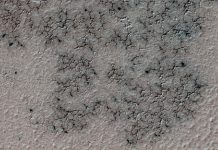Africa-Press – Liberia. At least 4,000 volunteers transcribed more than 28,000 logbook images from the US Navy fleet that was stationed in Hawaii between 1941 and 1945. The new data set is expected to help show whether or not unusually warm temperature recordings during World War II were in fact valid.
A mission to recover weather pattern observations made during World War II has successfully resulted in the recovery of 630,000 records, establishing a means for researchers to gain a better understanding of how meteorological conditions have changed over decades.
The research should help scientists in their search for an explanation for the anomaly known as the “World War II warm anomaly” (WW2WA), a recording of high temperatures thought to have been caused by sailors who documented weather data during the day in order to avoid enemy vessels. The practice is believed to have prompted biases, according to a separate study by authors Duo Chan and Peter Huybers.
At the time, the primary source for marine observations were made during World War II; however, many records were destroyed as an act of war, or otherwise considered forgotten as they were considered classified for a period of time, the authors explained in a news release.
“Each record contains the date and time, positional information and several meteorological measurements, totaling more than 3 million individual observations.”
“This dataset not only contains hourly weather observations of air temperature, sea surface temperature, atmospheric pressure, wind speed and wind direction, mainly in the Pacific Ocean but also includes some observations from the Atlantic and Indian Oceans,” the authors explain. “This dataset provides invaluable instrumental weather observations at times and places during WW2, which fill gaps in existing reconstructions.
The records were made by crew members aboard 19 US Navy ships during World War II, but many of the ships where this data was recorded were bombed in Pearl Harbor and/or saw action in the Pacific theater during war.The information was shared in a study that was published in the Geoscience Data Journal.
For More News And Analysis About Liberia Follow Africa-Press






